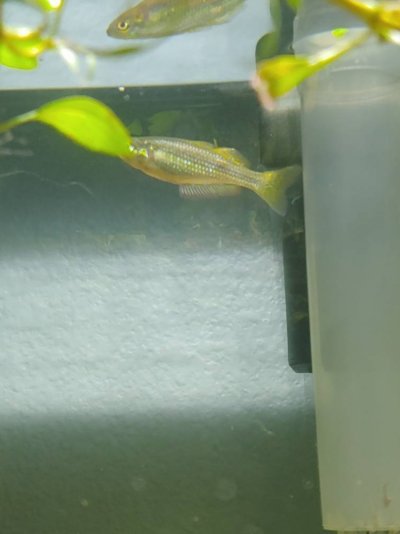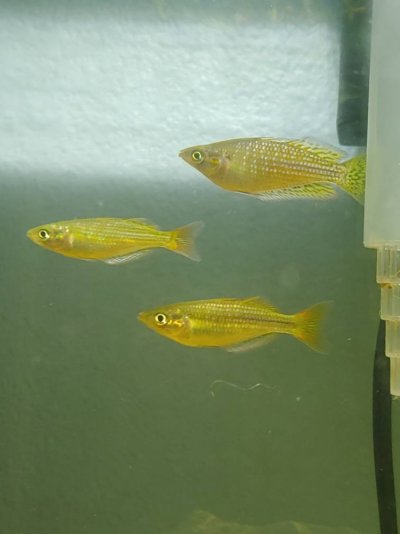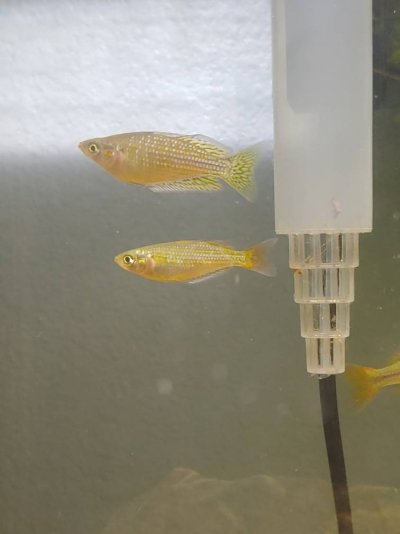Ok, maybe not a mystery to more experienced rainbow keepers, but this is my first squadlet. If possible from these pictures, I'd like to try and get some gender identities. Three look to be at a similar stage of development, with another clearly showing more adult coloration and- more telling- size. From my reading I've determined that rainbows can be relatively easy to sex, but with the size/color difference I don't trust myself to accurately sex them.
There are four fish, and the least disappointing scenario I'm hoping for a 50/50 split. Ideally, I want three ladies and a male. I did not think about this when choosing the fish so if I have a 50/50 I might end up getting some more females to even the odds. Of course, if I have three males then... Guess I'll do some exchanging which I want to avoid because I just got them and don't want to over stress the poor creatures.
Anyways, I'm going to number each fish and they will keep the numbers through the series of photos. Their are some notable differences. I can definitely tell them all apart.

This is Fish 1. The only pic of Fish 1. Fish 1 is shy and does not like getting its picture taken.

Fish 2, Fish 3, and Fish 4 from top to bottom, respectively. Fish 2 is the chunker. Fish 3 and 4 sport some red tones on base of caudal fins.

Final picture of Fish 2 AKA Big One and Fish 3. This is probably the most accurate capture of their colors. Phone camera yellowed them quite a bit.
There are four fish, and the least disappointing scenario I'm hoping for a 50/50 split. Ideally, I want three ladies and a male. I did not think about this when choosing the fish so if I have a 50/50 I might end up getting some more females to even the odds. Of course, if I have three males then... Guess I'll do some exchanging which I want to avoid because I just got them and don't want to over stress the poor creatures.
Anyways, I'm going to number each fish and they will keep the numbers through the series of photos. Their are some notable differences. I can definitely tell them all apart.

This is Fish 1. The only pic of Fish 1. Fish 1 is shy and does not like getting its picture taken.

Fish 2, Fish 3, and Fish 4 from top to bottom, respectively. Fish 2 is the chunker. Fish 3 and 4 sport some red tones on base of caudal fins.

Final picture of Fish 2 AKA Big One and Fish 3. This is probably the most accurate capture of their colors. Phone camera yellowed them quite a bit.
